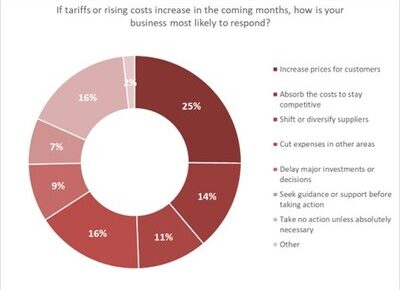Thomson Reuters Corp is expanding its reach into the Nasdaq-100 family, joining the Nasdaq-100 and the Nasdaq-100 Equal Weighted Index ahead of the market open on Monday, July 28, 2025. This move will see Thomson Reuters replace ANSYS, Inc. in both core Nasdaq-100 indices, signaling a notable rebalancing of large-cap exposure within the Nasdaq ecosystem. As a consequence, ANSYS will be removed from the Nasdaq-100 Index and the Nasdaq-100 Equal Weighted Index, and its removal extends to a broader set of Nasdaq-100 sector and strategic indices on the same date. The transition underscores Nasdaq’s ongoing index reconstitution activities and reflects the evolving composition of leading technology and information-services firms in the market.
Overview of the Announcement and Key Details
Nasdaq announced that Thomson Reuters Corp, ticker TRI, will become a component of the Nasdaq-100 Index (NDX) and the Nasdaq-100 Equal Weighted Index (NDXE) prior to market open on Monday, July 28, 2025. In tandem with this inclusion, Thomson Reuters will replace ANSYS, Inc. (ANSS) in both the Nasdaq-100 Index and the Nasdaq-100 Equal Weighted Index. The implications of this change are immediately practical for index-tracking funds, exchange-traded products, and passive investment strategies that reference these benchmarks. The shift marks a direct substitution within key benchmark constructs that influence portfolio construction, liquidity, and exposure for market participants who rely on these indices for strategic allocation or benchmarking purposes.
In addition to the core index replacements, ANSYS, Inc. will be removed from a broader slate of Nasdaq-100 related indices on the same date. The removals include the Nasdaq-100 Tech Sector Index (NDXT), the Nasdaq-100 Technology Sector Market-Cap Weighted Index (NDXTMC), the Nasdaq-100 Technology Sector Adjusted Market-Cap Weighted Index (NDXT10), the Nasdaq-100 ESG Index (NDXESG), the Nasdaq-100 ex Top 30 Index (NDX), the Nasdaq-100 ex Top 30 UCITS Index (NDX), and the Nasdaq-100 Select Equal Weight Index (NDXSE). This multi-index removal reflects a comprehensive update to the technology and sector-focused baskets that Nasdaq maintains, aligning the tech sector representation with the new constituent and adjusting the exposure profiles accordingly.
Concurrently, Thomson Reuters will replace ANSYS, Inc. in the Nasdaq-100 Tech Sector Index (NDXT), the Nasdaq-100 Technology Sector Market-Cap Weighted Index (NDXTMC), and the Nasdaq-100 Technology Sector Adjusted Market-Cap Weighted Index (NDXT10) on the same date. The coordinated replacement across these technology-focused indices ensures a consistent transition for market participants and index-tracking products that need to adjust their holdings in a synchronized manner to reflect the updated composition.
For those seeking official company background, the current listing and related corporate information are accessible through Thomson Reuters’ corporate channels. However, in this article, we do not include direct links or contact specifics, focusing instead on the substantive changes and their implications for indices, investors, and market dynamics.
The information provided here is intended for informational and educational purposes only. It should not be construed as investment advice or as a recommendation to buy or sell any financial product or to adopt any particular investment strategy. Market participants should undertake their own due diligence and consult their licensed financial professionals before making investment decisions. Nasdaq and its affiliates do not guarantee future performance of any index or its constituent securities, and past performance is not indicative of future results.
Indices Affected: Constituents, Substitutions, and Timing
Core Indices: Nasdaq-100 and Nasdaq-100 Equal Weighted
In the core Nasdaq-100 Index (NDX) and the Nasdaq-100 Equal Weighted Index (NDXE), Thomson Reuters Corp will assume a position that reflects its status as a large-cap constituent anticipated to align with the index’s constituent criteria. The replacement process involves removing ANSYS, Inc. (ANSS) from the two primary benchmarks and inserting Thomson Reuters Corp (TRI) in its place. The timing of the transition is set to occur prior to market open on Monday, July 28, 2025. This precise timing is designed to minimize disruption and allow index-tracking portfolios to execute the adjustment during the regular trading cycle.
Sector and Strategic Indices: Tech Sector, ESG, Ex Top 30, and Related Indices
The replacement extends beyond the core indices to a suite of sector-focused and alternative-weighted indices. ANSYS, Inc. will be removed from the Nasdaq-100 Tech Sector Index (NDXT), the Nasdaq-100 Technology Sector Market-Cap Weighted Index (NDXTMC), and the Nasdaq-100 Technology Sector Adjusted Market-Cap Weighted Index (NDXT10). These removals are set for the same date as the core index changes, ensuring consistency in sector composition and exposure for investors who use technology sector benchmarks to manage risk, performance tracking, and sector-specific investment strategies.
Additionally, ANSYS will be removed from the Nasdaq-100 ESG Index (NDXESG), the Nasdaq-100 ex Top 30 Index (NDX), and the Nasdaq-100 ex Top 30 UCITS Index (NDX). The ex-Top-30 variants are designed to provide exposure strategies that exclude the largest 30 constituents to reflect alternative weighting schemes or regional investment approaches. ANSYS’ exit from these indices also extends to the Nasdaq-100 Select Equal Weight Index (NDXSE), which applies an equal-weight methodology across its constituents. The removal from these varied indices on the same date highlights Nasdaq’s commitment to maintaining coherent index design across multiple tracking products and ensuring that all relevant indices reflect the updated lineup.
Unified Substitution Across Multiple Indices
Thomson Reuters will replace ANSYS, Inc. in the Nasdaq-100 Tech Sector Index (NDXT), the Nasdaq-100 Technology Sector Market-Cap Weighted Index (NDXTMC), and the Nasdaq-100 Technology Sector Adjusted Market-Cap Weighted Index (NDXT10) on the same date. This consolidated substitution ensures that technology exposure is harmonized across different index variants, reducing potential discrepancies in sector representation among technology-focused benchmarks. Investors who monitor the various technology indices or rely on sector-based attribution will experience a synchronized transition that preserves the intended exposure framework inherent in Nasdaq’s index methodology.
Background: Thomson Reuters, ANSYS, and the Context for the Change
Thomson Reuters Corp: Profile and Market Position
Thomson Reuters Corp is recognized as a leading information and technology company with coverage spanning news, data, analytics, and software solutions across corporate clients, financial institutions, and broader market participants. Its inclusion in the Nasdaq-100 family signals recognition of its scale, liquidity, and strategic relevance to large-cap equity benchmarks. As a constituent of the Nasdaq-100, Thomson Reuters will contribute to the overall profile of the index, bringing its market presence, sector positioning, and financial performance into focus for investors tracking technology-adjacent and information services equities.
ANSYS, Inc.: Profile and Market Position
ANSYS, Inc. is a software company known for engineering simulation and engineering analysis solutions across industries. Its removal from the Nasdaq-100 indices indicates a shift in the balance of technology-related constituents within the benchmark framework, reflecting Nasdaq’s ongoing index review process and the objective to maintain alignment with evolving corporate landscapes and liquidity profiles. The transition of ANSYS out of the index—across both core and sector-focused baskets—has implications for investors who track performance benchmarks and for funds whose holdings aim to mirror index weights.
Nasdaq’s Index Methodologies and Reconstitution Practices
Nasdaq’s index management teams implement regular reconstitution cycles to ensure that constituent selections reflect current market capitalizations, liquidity, and eligibility criteria. The reconstitution process involves a defined set of rules for constituent changes, including the replacement of one company with another in the same investment universe when a removal occurs. The approach aims to preserve the integrity of the index’s construction, the accuracy of sector representations, and the reliability of tracking products that are designed to replicate the index performance. The alignment of removals and inclusions on the same date across related indices demonstrates a deliberate strategy to minimize disconnects between core and derivative benchmarks.
The transition date—before market open on July 28, 2025—provides an orderly window for index funds, ETFs, and other passive investment vehicles to adjust holdings in a predictable manner. Market participants often prepare calendar plans around such reconstitution events, updating fund portfolios, indices-adjustment rules, and related trading strategies to reflect the new composition as soon as trading resumes after the open. The timing also helps ensure that price discovery and liquidity dynamics are not unduly disrupted by staggered changes across related indices.
Implications for Investors and Market Participants
Investment Funds and ETFs
Index-tracking funds, including ETFs that reference the Nasdaq-100 and Nasdaq-100 Equal Weighted indices, will need to rebalance to reflect the new constituent. This typically involves trade execution to reflect the inclusion of Thomson Reuters Corp and the exclusion of ANSYS, Inc. The changes can influence liquidity, trading volumes, and tracking error for funds that aim to closely mirror the index’s performance. Funds that track the tech sector indices (NDXT, NDXTMC, NDXT10) and the ESG or ex-Top-30 variants may also adjust their holdings to reflect the updated sector representation and to avoid tracking errors caused by stale constituent lists.
Liquidity and Market Exposure
The transition is expected to impact the liquidity profile of the affected securities, particularly if the new constituent has different trading characteristics, market depth, or exposure to sector-specific demand. Thomson Reuters’ inclusion may draw additional attention from market participants and analysts, potentially affecting liquidity and price sensitivity in the days surrounding the change. Conversely, ANSYS’ removal could alter liquidity dynamics for that name in both the core and sector-focused indices, particularly if the company experiences varied participation in related investment products.
Benchmarking and Performance Attribution
Institutions using Nasdaq-100-based benchmarks for performance attribution, risk analysis, and portfolio benchmarking will observe the composition changes reflected in attribution studies and performance reports. The inclusion of Thomson Reuters will contribute to rebalanced weightings and may influence sector and overall index performance depending on its relative market performance, liquidity, and correlation with the broader technology and information-services landscape. Analysts and portfolio managers may adjust attribution models to account for the reconstitution impact and to distinguish between true security performance and index-construction effects.
Risk Management Considerations
The index changes can affect risk profiles for passive portfolios by shifting sector concentration and constituent risk exposure. A transition that adds Thomson Reuters to the Nasdaq-100 and related indices could slightly alter the concentration weight of the technology-adjacent information-services domain within the benchmark. Investors who rely on sector risk models and factor exposures may re-evaluate their risk budgets to reflect the updated index composition and any associated shifts in sector beta, liquidity risk, or concentration risk.
Practical Timelines, Communications, and Compliance
Timing of the Change
The official timing notes indicate the inclusion of Thomson Reuters Corp into the Nasdaq-100 and the Nasdaq-100 Equal Weighted Index will occur prior to the market open on Monday, July 28, 2025. The simultaneous removals and substitutions across the broader set of indices—an action that includes the Nasdaq-100 Tech Sector Index (NDXT), the Nasdaq-100 Technology Sector Market-Cap Weighted Index (NDXTMC), the Nasdaq-100 Technology Sector Adjusted Market-Cap Weighted Index (NDXT10), the Nasdaq-100 ESG Index (NDXESG), the Nasdaq-100 ex Top 30 Index (NDX), the Nasdaq-100 ex Top 30 UCITS Index (NDX), and the Nasdaq-100 Select Equal Weight Index (NDXSE)—are designed to ensure consistency and clarity for market participants relying on multiple benchmarks.
Investor Communications and Compliance
For investors and market participants, the changes are typically communicated through official notices and the updated constituent lists for each index. While this article provides a comprehensive description of the changes, participants should rely on authoritative index announcements and index methodology documents to confirm details, including exact weight adjustments and any caveats associated with the transition. Compliance teams within investment firms often review the changes to ensure that internal indices, overlay strategies, and automated trading rules reflect the new composition.
Information Dissemination and User Education
In the broader context of information dissemination, Nasdaq’s index changes are a signal to the market about evolving constituent dynamics among large-cap technology and information-services companies. Such announcements help educate investors about how index compositions influence exposure, performance, and a range of passive investment strategies. While the primary purpose is to inform market participants about reconstitution events, the accompanying context—such as methodology and sector emphasis—helps users better understand the potential implications and plan accordingly.
Nasdaq, Index Methodology, and The Broader Market Context
Nasdaq’s Role in Global Markets
Nasdaq is a leading global technology company serving corporate clients, investment managers, banks, brokers, and exchange operators as they navigate and interact with the global capital markets and the broader financial system. Nasdaq’s platforms and indices contribute to the liquidity, transparency, and efficiency of the global economy. The company’s product suite spans data, analytics, software, exchange capabilities, and client-centric services designed to support clients’ business objectives and investment strategies across diverse markets.
Methodological Consistency Across Indices
The cross-index transition described above demonstrates Nasdaq’s commitment to maintaining methodological consistency across its index family. By aligning replacements across the Nasdaq-100, Nasdaq-100 Equal Weighted, Tech Sector, ESG, ex Top 30, UCITS, and Select Equal Weight indices, Nasdaq preserves coherent exposure profiles and minimizes potential tracking discrepancies for funds and products that reference multiple benchmarks. This approach helps market participants more accurately assess performance drivers and attribution, while preserving the integrity of the index framework.
Focus on Transparency and Investor Confidence
Transparency surrounding changes to benchmark constituents strengthens investor confidence by providing clear rationale and predictable timing. Investors can incorporate knowledge of reconstitution events into portfolio construction, risk management, and return expectations. Nasdaq’s governance framework emphasizes clear communication about changes and the implications for tracking products, which supports better decision-making across the investment ecosystem.
Acknowledgments, Disclaimers, and Closing Notes
The information above is provided for informational and educational purposes only. It should not be construed as investment advice or a solicitation to buy or sell any financial product. Nasdaq, Inc., and its affiliates do not guarantee future performance of any proprietary index or constituent investment product, and actual results may differ materially from those expressed or implied. Past performance does not guarantee future results. Investors should conduct their own due diligence and consider consulting a securities professional before making investment decisions.
Conclusion
Nasdaq’s announced changes bring Thomson Reuters Corp into the Nasdaq-100 and Nasdaq-100 Equal Weighted indices ahead of the market opening on July 28, 2025, replacing ANSYS, Inc. in both core indices. The same date marks ANSYS’ removal from a broad set of indices, including the Nasdaq-100 Tech Sector Index, the Nasdaq-100 Technology Sector Market-Cap Weighted Index, the Nasdaq-100 Technology Sector Adjusted Market-Cap Weighted Index, the Nasdaq-100 ESG Index, the Nasdaq-100 ex Top 30 Index, the Nasdaq-100 ex Top 30 UCITS Index, and the Nasdaq-100 Select Equal Weight Index, with Thomson Reuters replacing ANSYS in the corresponding sector indices as well. This consolidated transition emphasizes both the strategic reshaping of large-cap exposure within Nasdaq’s benchmark family and the practical implications for index-tracking investment products, passive funds, and market participants who rely on these benchmarks for performance measurement, risk assessment, and strategic allocation. Readers should stay attentive to official index communications for precise constituent lists and weight changes and consider the broader implications for portfolio construction, diversification, and exposure management in light of these reconstitutions.



